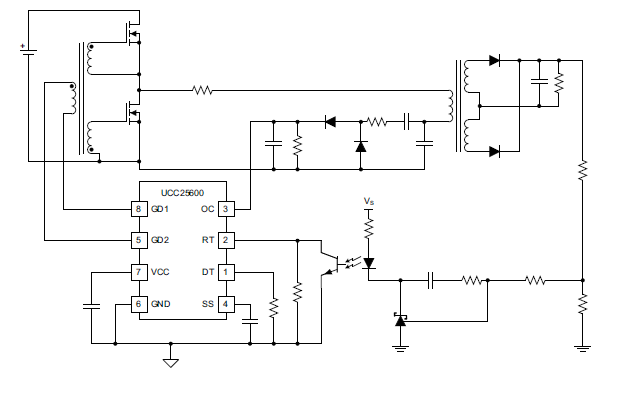Other Parts Discussed in Thread: UCC28019A, TL431, UCC28951, UCC28950, UCC2895, UCC28951-Q1, UCC28950-Q1, PMP2187, LM5035, TL494, UCC21520, UCC2818
Dear All,
i selected the UCC25600 for a 400 W resonant converter.
the problem is that i need to adjust the output voltage of a resonant converter when it works.
the output voltage has a wide range from 0 to 400 V.
the input voltage is 400 V ( form UCC28019A PFC stage ).
the maximum current is 1 A and the load is a resistance ( variable resistance 400 W ).
please see the bellow schematics ( form data sheet ):
can i adjust the voltage by change the Vs?
or can i adjust the voltage by changing the upper resistance in the divider?
or is there any other methods to do that?
Regards,
Ras


